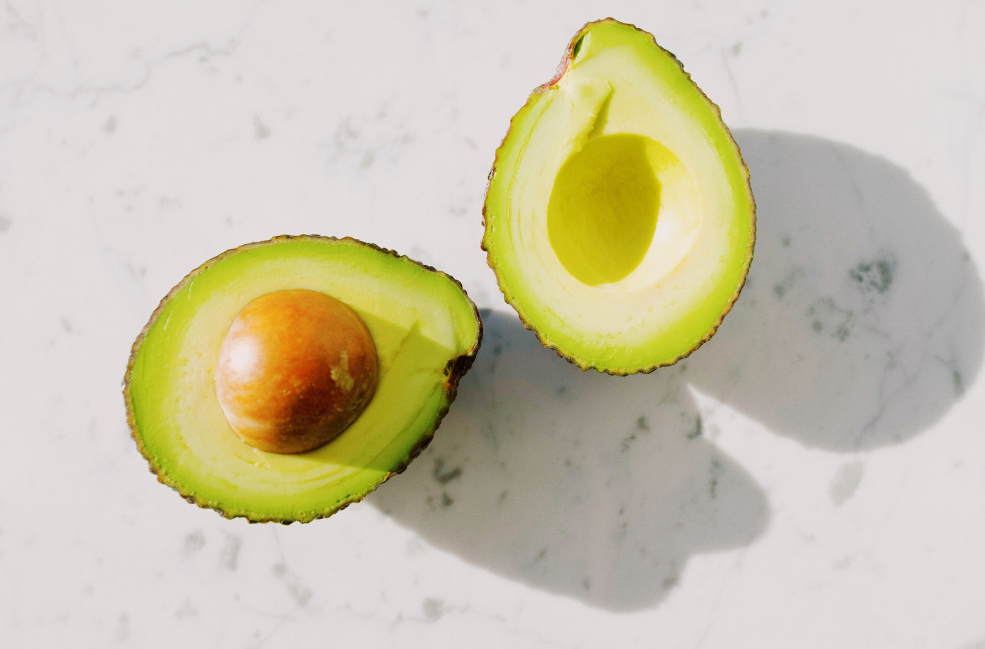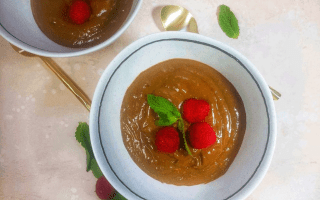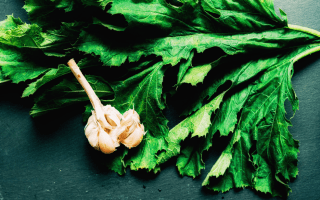Avocados are an unusual fruit. According to its common usage, the USDA categorized them in their food database as a vegetable. But botanically, they’re a berry. For fruit, avocados also contain a surprising amount of fat, 23 grams in a whole avocado. But, it is their high-fat content that makes them so versatile. For example, you can use them in vegan chocolate pudding or spicy guacamole. And, we all know they’re considered a health food, but what are their benefits? We explore this question and uncover some surprising avocado facts in this Ingredient Spotlight.
Avocado is a good source of potassium
Half of an avocado contains 14% of the daily value (DV) for potassium. In case you’re wondering, this means that half an avocado provides 14% of the potassium you need each day (1). So, eating a whole avocado provides 28% of the DV for potassium. And, you may have heard that bananas are high in potassium as well. But, a medium-sized banana only contains 9% of the DV for potassium (2). Potassium is a mineral that helps the body regulate fluid, muscle contractions and nerve signals. Studies show a link between high potassium intake and lower blood pressure (3). Having high blood pressure is a significant risk factor for heart attack, stroke and kidney failure.
However, its potassium content is not the only nutritionally impressive thing about this fruit. It’s also high in antioxidants, fiber and good fats.
First, let’s talk antioxidants
What are antioxidants? “Antioxidants are molecules that neutralize free radicals, unstable molecules that can harm your cells.” Avocados are a good source of vitamin C and E, both antioxidants. In addition, they also contain high levels of the carotenoid antioxidants lutein and zeaxanthin, which are essential for overall eye health. They protect your eyes from diseases, such as cataracts and macular degeneration (4). To reap the benefits of carotenoids in avocados, make sure you eat the greenest part of the pulp closest to the skin. That’s where a majority of the carotenoids are. While it’s common to find carotenoids in produce, it’s unusual for a fruit or vegetable to contain the fats needed to help the body absorb these nutrients.
The fats in avocados
Avocados are a high-fat fruit. But, the fats in avocados have many benefits. Its fat is primarily monounsaturated fat, otherwise known as “good fat.” There is also has a little bit of polyunsaturated fat and saturated fat. Still, monounsaturated fat helps to lower LDL (bad) cholesterol. Another benefit? Fats aid in absorbing certain fat-soluble vitamins-particularly vitamins A, D, E, K and antioxidants, such as carotenoids. Without fats, the body is unable to absorb these vitamins efficiently. So, it’s a good idea to add avocados to your salads (5). And lastly, the fats in avocados help you feel full, especially when combined with its fiber content. Studies show that they keep people feeling satisfied for up to 5 hours after eating them with a meal. However, there are conflicting results on whether or not eating avocados can help with weight loss in general.
Avocados are high in fiber
The carbohydrates in avocados are mostly fiber, making them a low net carb food. Fiber is essential for overall bowel health and helps regulate blood sugar levels. And 1/2 of an avocado contains 7 grams of fiber or 27% of the recommended daily allowance (RDA). But, this is by no means all an avocado has to offer. Avocado pulp has many more benefits than the main points we’ve discussed. However, they don’t contain any vitamins or minerals we can’t get from other foods, so don’t worry if you don’t like them. It turns out that their seeds have benefits for everyone, whether you eat avocados or not.
The seed is full of goodies, too
In 2017, a group of scientists presented their findings at the 254th National Meeting & Exposition of the American Chemical Society (ACS), the world’s largest scientific society. They discovered that the avocado husk we routinely throw in the trash and bury in landfills actually contains many valuable compounds. Most of these compounds are medicinal and some can be used to produce plastic. One of the medicinal constituents are behnyl alcohol “an important ingredient used in anti-viral medications; heptacosane, which might inhibit the growth of tumor cells; and dodecanoic acid, which increases high density lipoprotein (HDL)” (6). HDL is also known as good cholesterol.
However, do not eat the husk. It contains toxins, such as the chemicals used to produce plastic. If you want to know how to pick an avocado and know when they’re ready…
Here are some avocado selection tips
- When possible, buy them before they are ripe and ripen them at home.
- Pick firm avocados with the stem still intact.
- Keep them on the counter to ripen, which may take up to 5 days.
- To ripen them more quickly, place them in a paper bag with an apple or banana.
- Once the skin turns black or dark purple and yields to gentle pressure, the avocados are ready to eat. (You can also store them in the refrigerator to keep them from becoming overripe.)
- If you’re not sure, you can remove the stem and take a look. It should look green underneath the stem when ripe. If it still looks white, they are not ripe yet. And if it looks brown, they may be overripe.
- Always wash avocados before cutting them open. Bacteria can transfer from the outside to the inside with a knife cut.
Read more posts about Nutrition where we share information on optimizing your health through food.
This article is for informational purposes only, even if it features the advice of physicians and medical practitioners. It is not intended to be a substitute for professional medical advice, diagnosis, or treatment and should never be relied upon for specific or personal medical conditions. Your use of the site indicates your agreement to be bound by our Terms of Use and Privacy Policy.
Publications
(1) Center for Food Safety and Applied Nutrition. “How to Understand and Use the Nutrition Facts Label.” U.S. Food and Drug Administration, FDA, www.fda.gov/food/new-nutrition-facts-label/how-understand-and-use-nutrition-facts-label.
(2) “Office of Dietary Supplements - Potassium.” NIH Office of Dietary Supplements, U.S. Department of Health and Human Services, ods.od.nih.gov/factsheets/Potassium-HealthProfessional/.
(3)Aburto NJ;Hanson S;Gutierrez H;Hooper L;Elliott P;Cappuccio FP; “Effect of Increased Potassium Intake on Cardiovascular Risk Factors and Disease: Systematic Review and Meta-Analyses.” BMJ (Clinical Research Ed.), U.S. National Library of Medicine, pubmed.ncbi.nlm.nih.gov/23558164/.
(4) Arnarson, Atli. “8 Nutrients That Will Optimize Your Eye Health.” Healthline, 15 Feb. 2019, www.healthline.com/nutrition/8-nutrients-for-eyes.
(5) SJ;, Unlu NZ;Bohn T;Clinton SK;Schwartz. “Carotenoid Absorption from Salad and Salsa by Humans Is Enhanced by the Addition of Avocado or Avocado Oil.” The Journal of Nutrition, U.S. National Library of Medicine, pubmed.ncbi.nlm.nih.gov/15735074/.
(6) “Avocado Seed Husks Could Be a Gold Mine of Medicinal and Industrial Compounds.” American Chemical Society, www.acs.org/content/acs/en/pressroom/newsreleases/2017/august/avocado-seed-husks-could-be-a-gold-mine-of-medicinal-and-industrial-compounds.html.







